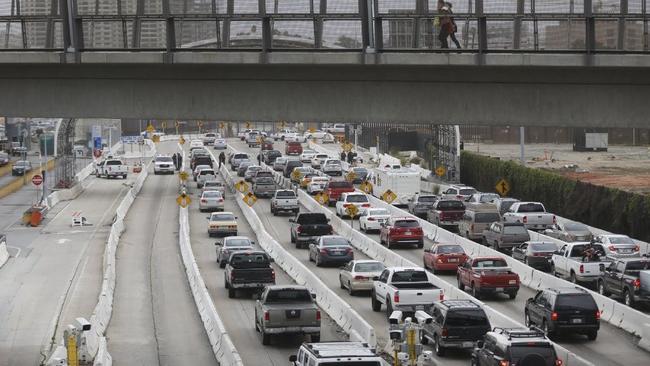San Diego-Tijuana is a $230 billion economic engine with over 5 million residents and nearly 2 million employees. We are 40 percent of the entire U.S. and Mexico border population and the busiest land border crossing in the Western Hemisphere, with approximately 120,000 passenger vehicles, 63,000 pedestrians and 6,000 trucks crossing back and forth every single day.
We are a constellation of powerful industries in a productive cross-border partnership. In Tijuana, we showcase the world’s largest medical device cluster and Mexico’s top aerospace, electronics and defense clusters, many of which have administration and operations facilities on the U.S. side of the border. There are nearly 600 export manufacturing plants and 50 contract manufacturing options meeting world-class quality standards within a 15-mile radius south of the San Ysidro port of entry; $42 billion worth of goods are imported and exported at Otay Mesa each year.
San Diego’s biotechnology and pharmaceutical, biomedical, software and communications clusters are significant contributors to a $52 billion innovation economy that accounts for over 400,000 jobs — 30 percent of the city’s employment.
Tijuana adds close to $20 billion to San Diego’s production each year. The value of trade between San Diego and Mexico consistently exceeds $4 billion per year. Commercial exchange between Tijuana and San Diego is valued at $2.1 million daily.
Our relationship transcends financial transactions. There are numerous examples of collaboration and exchange involving medicine, medical tourism, the arts, the environment, epidemiology and security.
Our communities understand the competitive advantage we have when we act as one region, and critical to this advantage is a smooth flow of people, vehicles and cargo across our shared border. Although we know our prosperity is significantly tied to our border flows, border wait times have not improved. They can be upward of three hours for general and Ready Lane travelers and more than two hours for cargo. Lines from the U.S. to Mexico at peak afternoon times can be one hour long.
Our border’s traffic congestion and delays cost the San Diego County and the Baja California economies an estimated $6 billion annually in gross output, according to the San Diego Association of Governments’ “Economic Impacts of Wait Times at the San Diego-Baja California Border.” Over 51,000 jobs are lost because of the reduction in output. Wait times cost our region close to 3 percent of our GDP or $1,200 per person per year!
From a purely commercial perspective, our borders are America’s cash registers. All exports and imports must pass through them. No place else in the U.S., however, could make their customers wait in line every day for two hours and stay in business.
To many in this corner of Mexico’s Northwest and the U.S. Southwest who understand the power of our binational trade and commerce, this lost productivity is just unacceptable. Our hemisphere’s busiest border crossing is “dumb” and slow when what is needed is a “smart” border. As a result, San Diego and Tijuana business and academic leaders formed an organization to focus on this problem. We call it our Smart Border Coalition.
The first principle in a Smart Border is that security and commerce are not mutually exclusive. A Smart Border should be able to increase both of these, not offset one at the expense of the other. Malin Burnham, our founder and one of the area’s staunchest promoters of the binational region, believes Homeland Security’s objectives are heavily oriented toward safeguarding the nation, not trade or expedited crossings. There is a “structural flaw” in how the border is managed. He argues that the Department of State and the Department of Commerce should be a part of the policy conversation.
The second principle is innovation — the practical use of technology and re-engineered procedures — to create, improve and complement our ports of entry. Our region has been an innovation hub for more than 30 years with world class companies such as Qualcomm, Cubic, SAIC, Illumina, Sempra Energy, Medtronic, ScaleMatrix, and CareFusion leading the way. Our innovation economy is almost one quarter of our county’s GDP and provided close to 150,000 jobs in 2015, a historic high. UC San Diego has been the common thread for a great deal of the breakthrough research and applications that have made their way to millions of businesses and consumers. We must imagine what the border would look like if we made better use of locally generated technologies to create a “frictionless,” more efficient border infrastructure.
Border infrastructure
Our region has a track record of Smart Border solutions. These have been the result of our binational stakeholders’ dynamism and persistence. SENTRI, the trusted traveler fast pass for pedestrians and vehicles crossing the border, was invented here in the 1990s by San Diego Dialogue, a diverse group of binational professionals and UCSD academics. This program now represents almost 37 percent of all northbound crossings at our two ports. In addition, Customs and Border Protection and Aduanas have started programs for joint screening of agricultural goods at the Otay Mesa port of entry to avoid cargo having to stop at customs in both countries when crossing the border.
Otay Mesa East II Port of Entry, the “Model Port of the 21st Century,” will soon combine modern and practical facilities on both sides of the border with innovations such as reversible lanes and segmented tolling. The San Ysidro port of entry is nearing the end of a $750 million reconstruction effort that will boast 62 northbound vehicle primary inspection booths. For its part last year, Mexican customs opened its most modern trade facility in the entire country at the Otay Mesa port of entry in Tijuana.
CBX, the recently built cross-border pedestrian terminal and bridge that takes air travelers from the United States to the Tijuana airport in literally 10 minutes over an 800-foot walkway, had nearly 2 million passengers last year. Baja Rail, a Baja California company, recently rehabilitated the Mexican portion of the old Spreckels railway and will soon do the same with the U.S. segment, giving our export manufacturing industry a new alternative for freight movement to the East Coast of the United States.
Border innovation
Though building more of a wall in our region would not change much — for decades, we have lived with a “wall” that is up to two successive fences along a good portion of the San Diego-Tijuana border — reductions in wait times would spur commerce and trade, adding billions to our economies.
It is critical that we continue to leverage our thriving binational ties to go beyond what we have accomplished so far. Better processes, smarter systems, and more advanced technologies are required to make our border region more efficient. We must lead the way for improved traveler processing times by increasing the numbers of Customs and Border Protection and Mexican Aduana and immigration officers and by re-engineering processes once pedestrians and vehicles arrive at the booths. We must launch effective marketing and education campaigns so that crossers bring proper documentation and choose correct lanes upon arrival at the border. We must provide reliable online mapping that can suggest the most efficient border routes and appropriate lanes.
We must also collaborate to unclutter vehicle and truck access points to the border, expand joint inspections, increase membership in trusted traveler programs such as SENTRI and C-TPAT, formally launch pre-clearance initiatives for shipments long before they reach the border, and share importer and exporter load data through a “single window.”
There is no one better to work on creating a “frictionless” border than the people who live here. Border landers’ knowledge and experiences of what actually works for states, cities and communities on the border should drive the national debate about what secure and smart borders ought to look like in national policy terms.
In the 2014 Smart Border Coalition-sponsored paper “From Border Barriers to Bi-National Promise,” The Creative Class Group and thought leaders Richard Florida and Mary Walshok wrote, “Whether the topic is trade and manufacturing, medicine, the arts, the environment, epidemiology or even national security, a less paranoid, more collaborative, and more technologically sophisticated system of border management would pay enormous dividends, advancing new models of cross-border socio-economic equity.”
Notwithstanding our challenges, San Diego-Tijuana is a prime example of how the competitiveness brought on by NAFTA 23 years ago can be put into action and enhanced. Now that the spotlight is on U.S.-Mexico relations, the Smart Border Coalition calls on the San Diego-Tijuana region to seize the moment to define what the Smart Border must look like. Doing so will not only help us become safer and more prosperous, but it will also set an example of collaboration for dozens of other communities along the U.S.-Mexico border.
Williams and Larroque are co-chairs of the Smart Border Coalition board of directors. Bersin served in several key posts in the Department of Homeland Security during the Obama Administration, including acting commissioner of Customs and Border Protection. De La Fuente is executive director and a board member of the Smart Border Coalition.





